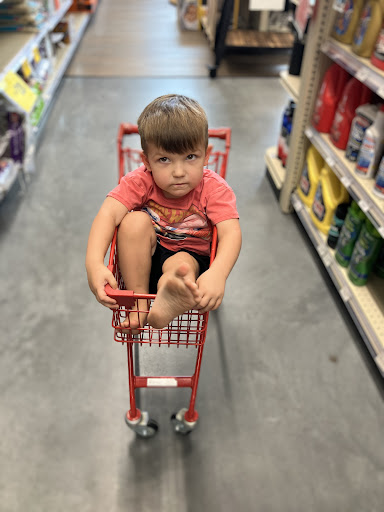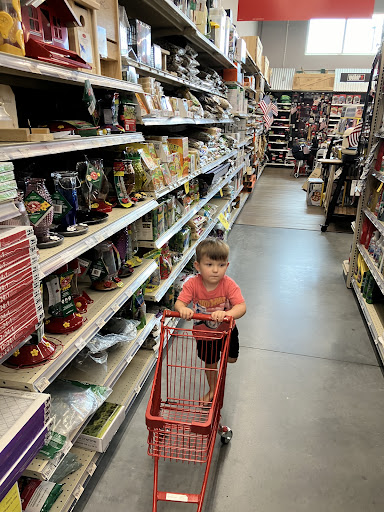clark and kensington cabinet paint: 7 Powerful Reasons to Love
Transform Your Kitchen Without the Hassle
Clark and Kensington cabinet paint is a specialized acrylic enamel formulation designed specifically for cabinets, doors, and trim. If you’re looking to refresh your kitchen without the expense of replacement, here’s what you need to know:
| Clark+Kensington Cabinet Paint Features | Details |
|---|---|
| Formulation | Paint + Primer in One |
| Available Finishes | Semi-Gloss and Hi-Gloss |
| Key Benefits | Exceptional scrubbability, stain resistance, moisture resistance |
| VOC Content | Low VOC (environmentally friendly) |
| Dry Time | 1-hour recoat, 7-day full cure |
| Price Range | $35-$55 per gallon |
| Where to Buy | Ace Hardware stores |
Cabinet painting transforms your kitchen for a fraction of the cost of replacement. With Clark and Kensington cabinet paint, you’re getting a premium product that combines durability with ease of application. The ceramic microsphere technology provides improved scrubbability and a smooth, even finish that stands up to daily wear and tear.
“It’s solid and among the better house-offer paints,” notes one professional painter in industry forums, highlighting its self-leveling properties that help minimize brush marks as it dries.
Unlike regular wall paint, Clark and Kensington cabinet paint creates a harder, more durable surface that resists chipping, peeling, and staining—essential qualities for high-traffic areas like kitchens and bathrooms. The built-in primer saves you time and effort while ensuring excellent adhesion to properly prepared surfaces.
The helpful team at Lowcountry Ace is ready to assist with all your cabinet painting needs, from color selection to application advice. We’ve helped countless Charleston homeowners achieve professional-looking results with Clark and Kensington cabinet paint.
What You’ll Learn
In this comprehensive review, we’ll cover everything you need to know about Clark and Kensington cabinet paint, including:
- Why this specialized formula outperforms regular wall paint on cabinets
- Available finishes and which is best for your specific needs
- Step-by-step application tips for professional-looking results
- How this paint stands up to daily use over time
- Cost considerations and potential savings compared to cabinet replacement
- Environmental benefits of choosing a low-VOC formula
Whether you’re a DIY enthusiast or planning to hire a professional, this guide will help you make an informed decision about using Clark and Kensington cabinet paint for your next kitchen or bathroom makeover.
Why Choose Clark+Kensington Cabinet Paint?
When you’re standing in the paint aisle wondering what to use on your cabinets, it’s easy to feel overwhelmed. But there’s a reason why Clark and Kensington cabinet paint has become a favorite among DIYers and professionals alike.
This paint isn’t just regular paint in a fancy can. It’s an acrylic enamel formulation that brings together the best of both worlds—the incredible durability you’d expect from oil-based enamels with the easy cleanup and low odor benefits of water-based paints. The secret? Tiny ceramic microspheres embedded in the formula that create a harder, more durable finish once dry.
“The ceramic micro-bead technology improves scrubbability, stain resistance, and gives a slight sheen to flat finishes,” as one industry expert points out. These little powerhouses are what help your cabinets stand up to daily abuse from greasy fingers, spills, and the occasional banged drawer.
One of the biggest time-savers is the paint+primer combination. For most cabinet projects, you won’t need a separate primer step, which means less time painting and more time enjoying your refreshed kitchen. The ultrawhite and midtone bases contain higher levels of titanium dioxide, giving you excellent coverage even over darker surfaces.
For families concerned about indoor air quality, Clark and Kensington cabinet paint offers peace of mind with its low VOC formulation. You can paint your kitchen cabinets without evacuating the house or worrying about lingering chemical smells around your food prep areas.
For more information about the complete line of Clark + Kensington products, you can visit their official website at Interior & Exterior Paint – Clark + Kensington.
Clark+Kensington Cabinet Paint vs Regular Wall Paint
I can’t tell you how many disappointed homeowners we’ve talked to who tried using leftover wall paint on their cabinets. Within months, they’re dealing with chipping, peeling, and fingerprints that just won’t wipe away. Here’s why Clark and Kensington cabinet paint outperforms regular wall paint in the cabinet department:
It grips like it means business. The superior adhesion properties help the paint stick to smooth, non-porous cabinet surfaces that would make regular paint slide right off.
Once cured, it creates a shell-like finish that resists the daily bumps and bangs cabinets face. Your toddler’s toy truck or hastily closed drawer won’t leave the same dents they might with standard wall paint.
The self-leveling properties are almost magical to watch. While you might notice brush marks when first applying, one professional painter observed that “the paint tends to self-level and crosslink into a smooth finish as it cures.” This means a more professional-looking result with less technique required.
Cabinet paint also contains stain-blocking technology that prevents those annoying wood tannins from bleeding through your beautiful new color. And in kitchens and bathrooms where steam and splashes are constant, the moisture resistance keeps your finish looking fresh longer.
Clark+Kensington Cabinet Paint Finishes & Sheens
When it comes to choosing your finish, Clark and Kensington cabinet paint offers two excellent options designed specifically for cabinets, doors, and trim:
Semi-Gloss is the crowd-pleaser, striking that perfect balance between looks and practicality. With a 4.5 out of 5 star rating from 26 customer reviews, it’s clear this finish delivers satisfaction. It reflects just enough light to brighten your kitchen without highlighting every imperfection in your cabinet doors. It’s scrubbable enough for families with small children but maintains a classic, timeless appearance that works in virtually any kitchen style.
Hi-Gloss is for those who want their cabinets to make a statement. This finish delivers maximum shine that bounces light around your kitchen, creating a contemporary, showroom-quality appearance. It’s the most durable and washable surface option, making it perfect for busy households or cooking enthusiasts who tend to splatter. The trade-off? It will show imperfections more readily, so proper prep work becomes even more important.
Both finishes use the same core enamel formulation—the primary difference is simply how much light they reflect. When making your choice, think about both your style preferences and your lifestyle needs.
Not sure which finish is right for your project? The helpful team at Lowcountry Ace can help you decide, or check out our comprehensive Paint Finishes Guide for more information about different paint finishes throughout your home.
Features That Make Cabinets Happy
Ever wonder what makes a cabinet truly happy? It’s not just about looking good on day one—it’s about maintaining that showroom-quality appearance for years to come. That’s where Clark and Kensington cabinet paint really shines.
Stain Resistance
Let’s face it—kitchen cabinets take a beating. From spaghetti sauce explosions to coffee drips and greasy fingerprints, your cabinets see it all. The special polymers in Clark and Kensington cabinet paint create a surface that resists these everyday stains, allowing you to simply wipe away messes without leaving permanent marks. That tomato sauce that would have stained your old cabinets? It just wipes clean now.
Moisture Defense
Whether it’s bathroom steam or splashes from the kitchen sink, moisture is the enemy of beautiful cabinetry. The thoughtfully engineered acrylic enamel in Clark and Kensington cabinet paint creates a moisture-resistant shield that keeps water from penetrating the paint film. This means less swelling, warping, and peeling—even in high-humidity areas where lesser paints would fail.
Colorfastness
Nothing’s more disappointing than cabinets that fade or yellow after just a few months. With UV-stable pigments built right into the formula, Clark and Kensington cabinet paint maintains its true color even in sunny spots near windows. Your crisp whites stay white, and your bold colors stay vibrant year after year.
Low Odor & Fast Recoat
Remember those old oil-based paints that made your whole house smell like chemicals for days? Those days are over. The low-VOC formula in Clark and Kensington produces minimal odor during application, so you can breathe easy while painting. Even better, you can apply a second coat after just one hour, which means you can actually complete your cabinet project in a weekend instead of dragging it out for days.
Smooth, Even Finish
Perhaps what homeowners love most about this paint is how professional the finished product looks. Thanks to its self-leveling properties, Clark and Kensington cabinet paint helps eliminate brush strokes and roller marks. As one painting pro noted, “Let the paint film level out before assessing coverage.” This patience pays off with a smooth, factory-like finish that has friends asking if you hired professionals.
Built-In Primer Technology
One of the smartest features of Clark and Kensington cabinet paint is its built-in primer technology. This isn’t just a marketing gimmick—it delivers real benefits:
The higher concentration of titanium dioxide provides superior hide, often letting you completely change cabinet colors with fewer coats. You’ll save significant time by eliminating the separate priming step—a huge plus when renovating a kitchen you need to use daily. The primer component creates improved adhesion with your cabinet surface, meaning less peeling and chipping down the road. It also provides effective stain blocking, sealing those pesky wood tannins that can bleed through your topcoat (especially important with oak cabinets).
While the built-in primer works for most situations, there are times when a separate primer might still help. “You may still need a separate primer to cover compound spots and seams,” advised one experienced painter, particularly for bare wood or dramatic color changes.
Environmental & Safety Perks
Today’s homeowners care about what they bring into their living spaces, and Clark and Kensington cabinet paint delivers peace of mind along with beautiful results.
The low VOC content means fewer harmful emissions during and after application—no more worrying about headaches, dizziness, or respiratory issues from paint fumes. The reduced odor makes the painting process much more pleasant, especially in kitchens where ventilation might be limited.
Cleanup is a breeze with just soap and water, eliminating the need for harsh chemical solvents. And once cured, the paint continues to be a safe choice for your family, maintaining good indoor air quality without off-gassing harmful chemicals.
The helpful team at Lowcountry Ace often points out that these environmental benefits don’t compromise performance—you still get exceptional durability and finish quality while making a more responsible choice for your home and the planet.
Application Guide for a Smooth Finish
Getting that professional look with Clark and Kensington cabinet paint isn’t magic—it’s all about preparation and technique. Let’s walk through how to get those gorgeous, smooth results you’re dreaming of.
Surface Preparation
The secret to beautiful cabinets starts long before you open the paint can:
First, remove all hardware and take off the doors if possible. This gives you better access and prevents paint drips on hinges and handles.
Next comes cleaning—and we mean really cleaning. Kitchens hide years of cooking oils and fingerprints that can ruin your new paint job. Use a good degreaser specifically for kitchen surfaces. Many of our customers find TSP substitute works wonders here.
For cabinets with an existing finish, don’t skip the deglossing step. A light scuff with 220-grit sandpaper creates tiny scratches that help your new Clark and Kensington cabinet paint grab hold properly.
“Rough the surface and apply a separate primer coat before repainting,” suggests one professional painter when dealing with particularly glossy or stubborn surfaces.
Before painting, address any dents or rough spots with progressive sanding—start with 150-grit and finish with 220-grit for smoothness. Then wipe everything down with a tack cloth to capture dust particles that could ruin your perfect finish.
Recommended Tools
Your tools can make or break your cabinet painting project:
For detailed work, reach for a high-quality 2-2.5 inch angled synthetic bristle brush. Synthetic bristles work beautifully with Clark and Kensington cabinet paint and leave fewer brush marks than natural bristles.
When covering flat surfaces, a 4-inch mini foam roller or 1/4-inch nap microfiber roller will give you smooth, even coverage without the texture that thicker rollers leave behind.
For truly showroom-quality results, an HVLP sprayer delivers the smoothest finish—though it does require more skill, setup, and cleanup time.
Application Process
Patience is your friend when applying Clark and Kensington cabinet paint:
Always apply thin coats rather than thick ones. It might seem counterintuitive, but multiple thin layers create a more durable, smoother finish than one thick coat that can drip or sag.
When brushing, follow the wood grain for the most natural appearance. Work quickly enough to maintain a “wet edge”—always painting into areas that haven’t begun to dry to prevent visible lap marks.
After your first coat dries (usually about an hour), lightly sand with 320-grit sandpaper. This step might seem fussy, but it removes any dust nibs or minor brush marks, creating a superior foundation for your second coat.
Most cabinet projects need at least two coats for perfect coverage and maximum durability. While your cabinets might feel dry to the touch after a few hours, give them the full 7-day cure time before returning to heavy use. This patience allows the paint to fully harden and develop its scratch and stain resistance.
Need help finding your perfect color? Visit our Paint Mixing Service Near Me page to learn how we can match virtually any shade.
Pro-Level Prep Steps
Want results that look like you hired professionals? These extra steps make all the difference:
In kitchens with heavy cooking history, one cleaning pass might not cut it. Degreasing might take multiple rounds—but skipping this step can lead to peeling paint later.
Use wood filler to address any holes or dents before painting. For a truly custom look, fill in the wood grain on oak cabinets if you prefer a smooth rather than textured appearance.
A thin bead of paintable caulk along seams between cabinet face frames and side panels creates that seamless, built-in look that screams “professional job.”
Create a dust-free painting area away from foot traffic, and consider using a fan with a filter to capture airborne particles that might land in your wet paint.
While Clark and Kensington cabinet paint includes primer technology, consider spot-priming bare wood, repairs, or areas where you’re making dramatic color changes.
“The neutral 340 base contains no titanium dioxide, so it loses the primer-in-one attributes present in ultrawhite and midtone bases,” notes one industry expert. The helpful team at Lowcountry Ace can guide you on whether your color choice might benefit from a separate primer.
Tips to Avoid Brush Marks
Brush marks are the telltale sign of a DIY paint job. Here’s how to avoid them with Clark and Kensington cabinet paint:
Use thin coats that flow and level better than thick applications. The paint contains self-leveling additives that need the right thickness to work their magic.
Keep a wet edge by planning your approach—always paint into areas that are still wet so strokes blend together seamlessly.
Master the tip-off technique: after applying paint to an area, lightly run your brush over the wet surface with minimal pressure using the very tips of the bristles to smooth out visible strokes.
Allow self-leveling time for the paint to do its work. “Let the paint film level out before assessing coverage,” advises one professional. What might look streaky initially often smooths out as it dries.
Control your environment by painting in moderate temperatures (65-85°F) with moderate humidity for optimal flow and leveling. Extreme conditions can make even the best paint perform poorly.
Durability & Performance Over Time
Let’s talk about what really matters when you’re investing in cabinet paint – how it holds up after the excitement of your kitchen makeover fades. Clark and Kensington cabinet paint has built quite a reputation for standing strong even in the busiest kitchens.
Chip Resistance
We’ve all seen it – those frustrating chips around cabinet handles where fingers constantly grab. The ceramic microsphere technology in Clark and Kensington cabinet paint creates a significantly harder surface than regular wall paint. This means when your kids slam the snack cabinet shut for the thousandth time, your paint job stays intact.
Peel Resistance
Kitchens and bathrooms are tough environments with constant humidity changes. One day you’re boiling pasta, the next you’re running a steamy shower. Clark and Kensington cabinet paint features improved adhesion and a flexible paint film that adapts to these conditions without lifting or peeling away from your cabinet surfaces.
Yellowing Defense
There’s nothing more disappointing than pristine white cabinets that start looking dingy and yellow. Cooking oils become airborne in kitchens and settle on surfaces, but Clark and Kensington cabinet paint contains special non-yellowing resins that keep whites crisp and bright year after year. Your morning coffee won’t have you staring at increasingly yellow cabinet doors.
UV Stability
For kitchens bathed in natural light (which we love in Charleston!), UV stability matters tremendously. The color-fast pigments in this paint resist fading, so that gorgeous coastal blue you selected stays true even when sunshine streams through your windows all afternoon.
Cleaning Durability
Let’s be honest – kitchen cabinets get dirty. From spaghetti sauce splatters to sticky fingerprints, you need a paint that can handle repeated cleaning. The “exceptional scrubbability” of Clark and Kensington cabinet paint isn’t just marketing talk – it truly maintains its finish even after hundreds of cleaning cycles with mild detergents.
Real customers consistently highlight this durability in their reviews: “I’ve used it and liked it,” notes one satisfied painter, while another mentions successfully using it on exterior doors with excellent results even a year later.
Professional painters have positive things to say too: “It’s solid and among the better house-offer paints,” states one contractor who used the ultrawhite formula on a springtime project.
Real-World Stress Tests
Your cabinets face some tough challenges in daily life. Here’s how Clark and Kensington cabinet paint handles the real-world gauntlet:
Door Slam Test: Every cabinet door in your kitchen gets closed firmly multiple times daily. The flexible yet tough paint film resists cracking at stress points around hinges and handles, even when the kids aren’t being gentle.
Hinge Rub: Those areas right around the hinges experience constant friction. The hardened ceramic finish stands up to this abrasion much better than standard paints, preventing that worn-through look that can make your cabinets look old before their time.
Heat and Steam Exposure: Cabinets near cooktops and dishwashers live in extreme conditions. Steam billows up when you drain pasta, and heat radiates when you’re baking. The moisture-resistant formulation prevents blistering and peeling even in these challenging spots.
Scrubbing Rating: On the professional scale used by paint experts, Clark and Kensington cabinet paint achieves excellent scrub ratings. This means you can wipe away that coffee drip or greasy fingerprint hundreds of times without losing color or reducing the paint’s shine.
“Allow freshly applied C&K paint to fully crosslink and cure before judging finish uniformity,” advises one industry expert. The paint continues developing its full protective properties during the 7-day cure period. A little patience during this time rewards you with maximum durability that will keep your cabinets looking fresh for years.
The helpful team at Lowcountry Ace can answer any questions about how this paint will perform in your specific kitchen environment. Many of us have used it in our own homes and can share first-hand experiences about its long-term performance.
Price, Sizes & Where to Buy
When it comes to changing your cabinets, Clark and Kensington cabinet paint offers excellent value without breaking the bank. This premium product delivers professional results at a price point that makes sense for homeowners looking to refresh their space without a complete renovation.
Available Sizes
You’ll find Clark and Kensington cabinet paint in two convenient sizes to match your project needs:
Quart (32 oz): Perfect for smaller projects like bathroom vanities or accent pieces. One quart typically covers 75-100 square feet, giving you plenty for a small set of cabinets.
Gallon (128 oz): The ideal choice for complete kitchen makeovers. With coverage of 300-400 square feet per gallon, most standard kitchens require just one or two gallons for full change.
Price Range
As a specialty product designed specifically for cabinets, Clark and Kensington cabinet paint is priced to reflect its premium formulation while remaining competitive:
Quarts typically range from $20-$25, while gallons usually run between $35-$55.
Keep an eye out for seasonal promotions at Lowcountry Ace, where you might catch deals like “Buy 2 select Clark + Kensington 1-gallon paints and save $15 in cart.” These savings can make your cabinet change even more affordable.
Where to Buy
As Ace Hardware’s premium house brand, Clark and Kensington cabinet paint is available exclusively at Ace Hardware stores, including our Lowcountry Ace locations serving Charleston and the surrounding communities.
Our Riverland Market location on Folly Road maintains a well-stocked paint department with the full spectrum of Clark and Kensington products. Both the semi-gloss and hi-gloss cabinet paint finishes are readily available, along with all the tools you’ll need for a successful project.
We’ve made shopping convenient with several options:
Visit us in-store where our paint experts can answer all your questions, place an online order for quick curbside pickup, or take advantage of our home delivery service for James Island and nearby areas.
Ace Rewards members enjoy additional benefits, earning points on paint purchases and accessing special promotions throughout the year. If you’re not already a member, our team would be happy to get you signed up during your next visit.
Custom Colors & Matching
The beauty of Clark and Kensington lies in its flexibility. With over 1,300 colors in the standard palette, you’ll likely find the perfect shade for your cabinet project right off the shelf.
For those special colors that need to be just right, our Online Paint Matching Service makes customization simple. Upload a photo of your desired color, bring in a physical sample like a fabric swatch or tile piece, or browse our in-store color fan decks to find your perfect match.
One helpful tip from paint professionals: custom colors in the neutral 340 base may have reduced primer properties compared to the ultrawhite or midtone bases since “the neutral 340 base contains zero titanium dioxide,” which affects coverage. The helpful team at Lowcountry Ace can guide you to the best base for your chosen color.
Warranty & Return Policy
We stand behind the quality of Clark and Kensington cabinet paint with Ace Hardware’s satisfaction guarantee. If you’re not completely happy with your paint’s performance, simply return it within 30 days of purchase with your receipt.
Should you encounter any manufacturer defects such as improper mixing, canning issues, or performance failures when properly applied, the manufacturer warranty covers replacement of the product.
Have questions about your purchase or need assistance with a return? The helpful team at Lowcountry Ace is always ready to assist—just stop by our store or give us a call. We’re committed to making your cabinet painting project a success from selection to application.
Frequently Asked Questions about Clark+Kensington Cabinet Paint
Is a separate primer ever needed?
While Clark and Kensington cabinet paint includes primer technology right in the formula, there are a few situations where adding a separate primer step makes good sense.
If you’re painting bare wood cabinets—especially oak, maple, or other woods rich in tannins—a dedicated stain-blocking primer helps prevent those natural wood oils from bleeding through your beautiful new finish. One customer told us her oak cabinets looked perfect after using a stain-blocker first, then two coats of Clark and Kensington.
Making a dramatic color change? When going from chocolate brown to crisp white, a separate white primer can save you time and paint in the long run. It creates a neutral base that helps your topcoat achieve true color coverage with fewer applications.
For problem surfaces like cabinets with water damage, smoke residue, or stubborn stains, a shellac-based primer creates a reliable seal before applying your Clark and Kensington cabinet paint. As one professional painter mentioned in forums, “You may still need a separate primer to cover compound spots and seams,” particularly in areas with repairs.
Extremely slick surfaces like laminate or previously glossed finishes sometimes benefit from a bonding primer to ensure maximum adhesion. The helpful team at Lowcountry Ace can recommend the right primer for your specific cabinet situation.
Can I use it on laminate cabinets?
Yes! Clark and Kensington cabinet paint works beautifully on laminate cabinets with proper preparation. The ceramic microsphere technology in the formula helps it grip challenging surfaces better than standard paints.
Start by thoroughly cleaning your laminate cabinets with a degreaser that removes all cooking residue and oils. This step is absolutely crucial—even invisible oils can prevent proper adhesion. Next, create a surface the paint can grip by lightly sanding with 220-grit sandpaper. Don’t sand too aggressively; you just need to scuff the surface.
For extra insurance on these tricky surfaces, consider a bonding primer designed specifically for non-porous materials before applying your Clark and Kensington cabinet paint. When painting, apply thin, even coats rather than thick ones—this prevents pooling or dripping on the non-absorbent laminate surface.
One of our James Island customers successfully transformed her 1990s laminate kitchen using this exact approach and reported that two years later, the cabinets still look fantastic with no chipping or peeling.
How long before I can reinstall hardware?
Patience pays off when it comes to the curing process for Clark and Kensington cabinet paint. While the paint feels dry to the touch relatively quickly, it continues to harden and develop its full durability over several days.
For best results, follow this timeline:
After 24 hours, you can carefully handle the painted surfaces without leaving fingerprints. Wait 2-3 days before reinstalling cabinet doors and drawers to avoid dents or scratches in the still-curing paint. Hold off on reinstalling hardware like knobs and pulls until 3-5 days have passed—this prevents damage from drilling or screwing hardware back into place.
For maximum hardness and durability, allow a full 7 days before subjecting your cabinets to normal everyday use and cleaning. One industry expert wisely advises, “Allow freshly applied C&K paint to fully crosslink and cure before judging finish uniformity.”
The one-hour recoat time you see on the can refers only to how quickly you can apply another coat of paint—not how soon the cabinets are ready for daily kitchen life. A little patience during this curing period rewards you with a finish that stands up to years of use.
The helpful team at Lowcountry Ace often reminds customers that this waiting period is the perfect time to clean and polish your hardware before reinstallation, making your cabinet makeover truly complete.
Conclusion
Clark and Kensington cabinet paint isn’t just another can on the shelf—it’s your ticket to a kitchen change that won’t break the bank or your back. The specialized ceramic microsphere technology creates that perfect balance of durability and beauty that keeps cabinets looking fresh even after countless coffee spills and sticky-fingered encounters.
What really sets this paint apart is how it performs in real homes, not just in laboratory tests. The semi-gloss option gives you that subtle, sophisticated sheen that works in traditional spaces, while the hi-gloss finish delivers that eye-catching contemporary look that makes visitors say “wow.” Either way, you’re getting exceptional scrubbability, stain resistance, and moisture defense that standard paints simply can’t match.
We’ve seen customers come into our store looking defeated after trying to paint cabinets with regular wall paint, only to have it chip and peel within months. Clark and Kensington cabinet paint solves these common frustrations with its specialized formulation.
Yes, preparation is still important—there’s no magic paint that sticks to grease and grime—but the self-leveling properties help even novice painters achieve results that look surprisingly professional. Those telltale brush marks that scream “DIY project” are minimized as the paint flows and settles into a smooth, even finish.
When you consider that completely replacing your cabinets might cost thousands, spending $35-$55 for a gallon of quality paint suddenly seems like the deal of the century. Plus, the low-VOC, low-odor formula means you won’t be banished from your kitchen by headache-inducing fumes while the project dries.
The helpful team at Lowcountry Ace is ready to guide you through every step of your cabinet change. Stop by our Riverland Market location on Folly Road where we can help you find the perfect color from over 1,300 options, answer your specific questions, and send you home with everything you need for a successful project.
Ready to fall in love with your kitchen again? Check out our Ace Hardware Paint James Island page for more information about our paint department and the services we offer to our Charleston neighbors.
With a little effort and the right paint, your cabinets can look brand new again—proving that sometimes the most satisfying renovations are the ones you tackle yourself, paintbrush in hand, with a quality product that’s up to the challenge.
Lowcountry Ace Hardware: Your one-stop shop for home improvement. We offer quality products from trusted brands and expert advice from our experienced staff. Located on James Island, visit us for tools, hardware, fishing gear, power tools, building materials, grills & smokers, electrical and plumbing supplies, and more.

















